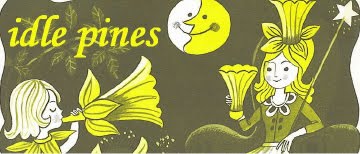Mavis Rose Latham, who wrote predominantly as Mavis Thorpe Clark, was born on 26 June 1909, in Melbourne, Victoria, the youngest of five children of John Thorpe Clark and his wife, Rose Matilda. Mavis was educated at the Methodist Ladies’ College, Melbourne. She wrote her first story when she was in her Intermediate year at school, which was later published as a serial in the Australasian (Anderson 11). Her first book, Hatherley’s First Fifteen, was written when she was eighteen. Mavis married Harold Latham on 19 December 1931. The couple had (at least) two daughters, Ronda and Beverley. Mavis returned to writing in the 1940s, using the pen name of Mavis Thorpe Clark, working on serials, short stories and articles before returning to writing books in 1949. She continued to write children’s novels including family and historical stories from the 1950s to 1980s gaining acclaim as an Australian children’s author. Her 1967 story, The Min-Min, won the Children’s Book Council Book of the Year Award. Clark died on 8 July 1999 in Melbourne, Victoria.
Further Reading
Clark, Mavis Thorpe. Trust the Dream: The Autobiography of Mavis Thorpe Clark, Author of 'the Min Min'. Melbourne: Australian Scholarly Publishing, 2004.
Links
MS 7847: Papers of Mavis Thorpe Clark at the National Library of Australia
Hatherley’s First Fifteen. Auckland: Whitcombe & Tombs Ltd., 1930. 254 pages. Illustrated F(rancis). E. Hiley, col. frontis. & 4 b/w illus.
Hatherley’s First Fifteen is part school story, part holiday or mystery story. The opening and closing chapters are set in the school, but the main part of the mystery plot occurs in the country during the holidays. The school part centres on sport and Hatherly’s attempt to win an unprecedented fourth straight Rugby premiership, whilst the holiday plot involves two boys being reunited with their long lost father in a lost relative motif, and the curing of one boy’s blindness. The novel opens with eleven-year-old new boy, Tom, watching Hatherly win the final in the Rugby Union Cup against Hamilton College. His idol, Jim Manning, scores the winning try, meaning that Hatherly have won the premiership three years straight. For the past twelve years four different schools have each won the cup consecutively three times each, but have not been able to hold it for a fourth year. How Hatherly are able to break this spell is the main thrust of the school story. In the holidays Tom returns to his country home where he lives with his older blind brother, Bob and an old nurse. They are orphans. They meet Jim Manning, who is staying with relatives, and become good friends with him and his sisters. One of the sisters, Jeanne, asks her father to help Bob. The story then moves forward six months. Bob has agreed to the Manning family’s offer of help and his eyesight is restored in an operation. At Mr Manning’s suggestion, Bob goes to Hatherly with his brother, eager to experience public school life. Bob shows natural talent in athletics and sport, and plays in the First XV against Welton in the final for the Cup. The spell is broken when Bob scores the winning try. Bob and Tom are reunited with their father, whom they thought was dead. A friend of Mr Manning’s turns out to be their father. His wife had taken their children to Australia and he had been trying to trace them when he learnt of their whereabouts from Mr Manning’s. Clark uses quite a romantic plot in reuniting the family.
Dark Pool Island. Melbourne: Oxford University Press Geoffrey Cumberlege, 1949. 112 p. Not Illus.
Dark Pool Island, part of Oxford University Press’ post-war growth in Australian publishing, features four pals at Gillman College, who are caught up in a mystery involving a rogue Headmaster, and a hidden fortune. Gillman College was founded fifty years earlier by Doctor Winston, and when the Doctor dies, his nephew, Albert Smith, takes over the school. However the new Head has been causing problems, leaving both pupils and teachers contemplating leaving. When the Head puts a nearby lake, Dark Pool, out of bounds, the four pals, Ted and his friends, Bill, Thomas, and the Nipper, wonder if it has anything to do with the rumours of the original owner of the property leaving a hidden fortune. The Nipper breaks bounds at night and discovers the Head and a couple of men searching near the lake. The boys’ suspicions are further aroused when they discover a bound and gagged stranger in a cave. The stranger claims he is Albert Smart, the Doctor’s nephew, and that the Head is an impostor, George Whitby, intent on stealing the fortune. They join forces and make a plan to capture the crooks and after some near misses manage to do so. They return to Dark Pool Island and find a safe hidden in an abandoned hut. Mr Smart is restored as the real Head of Gillman College, and the money is enough to solve the college’s financial difficulties. Dark Pool Island is a late example of the 1920s Australian boys’ school and adventure story, involving a rogue Headmaster.



Many thanks for your great site!
ReplyDelete'Jingaroo' and 'Missing Gold', two more of Mavis' early books have a "school days" theme.
Other books feature Australian settings - the early gold fields, pioneering in the lush Victorian forests, and the harsh deserts of central Australia.
If you'd like more information about Mavis Thorpe Clark, I'd invite you to visit http://www.mavisthorpeclark.com.au
Deb Lewis (Mavis' granddaughter)